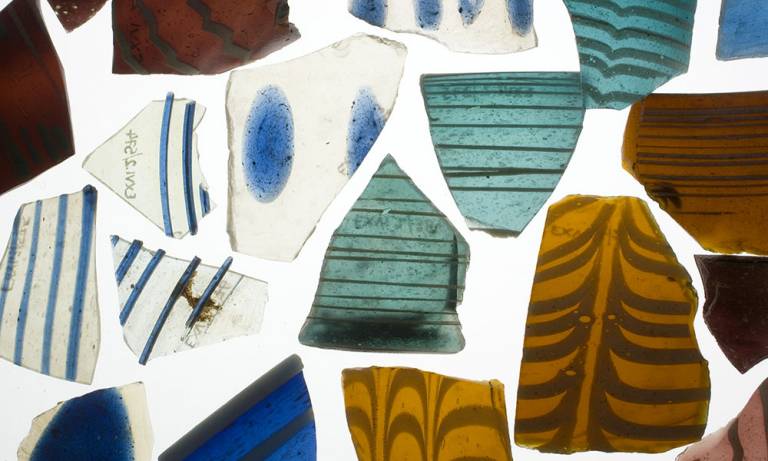UCL Institute of Archaeology staff undertake research beyond artefact typology to technology and practices of production.

Humans are one of the few animal species to use artefacts, and these culturally-invested objects are one of our main sources of archaeological information.
Artefact styles can be used to identify analytically useful cultural groupings in the absence of other kinds of evidence, as well as networks of cultural learning and patterns of cultural inheritance. Artefact distributions can indicate trade routes, particular kinds of consumer or producer, the spatial extent of human activity areas such as settlements and cemeteries, or in some cases the influence of political boundaries. Further traces of wear can suggest how an artefact was later used or how it might have been transformed and transported after deposition in the ground. To some extent, we can therefore build up a whole 'biography' behind a particular artefact from the moment that it was created to the point at which it was recovered from the archaeological record.
The Wolfson Archaeological Science laboratories are outstanding and support world-leading research in materials analysis. Materials Analysis in Archaeology aims to characterise the materials used by past people, using approaches adapted from the natural sciences. This data is then used to reconstruct human interaction with the environment and environmental conditions, as well as production and manufacturing technologies, trade contacts, and movement of ideas and materials across time and space.
Institute research strengths continue in archaeometallurgy, and early glass with a focus on the origins of technological innovations. Institute staff also work on textiles, on provenancing wooden artifacts, on ceramic production and use, and on the conservation of ceramics, wall paintings and metals. Trade and exchange in specialised economies are investigated - early commodity branding, early writing and seal use, and Roman coinage.
Projects
Current projects
- Andean Technology
- Ceramic Temper and identity groups
- Coin hoards of the Roman Republic
- Commensality, Cooking, Dining and the Politics of Gastronomy in the Near East
- Composition, Corrosion and Origins of Medieval Window Glass
- Conquest, Ecology and Economy in Islamic North Africa: The Example of the Central Medjerda Valley (ISLAMAFR)
- Dendrochronological dating of chests
- Dendrochronological dating of early doors
- Dendrochronological dating of standing buildings
- The Emergence of Craft Specialisation in the Near East
- Exploring post mill history
- Imperial Logistics: The Making of the Terracotta Army
- Inka Ceramics
- Late Prehistoric Hunter-Gatherer Ceramic Production and Distribution
- Making Oasis Civilisation in the Moroccan Sahara (OASCIV)
- The natron-based glass industries
- Peshdar Plain Project
- Personal Ornaments in the Ancient Near East
- Pyramidal Stone Anchors of the 4th-5th century BC Mediterranean
- Rapa Nui Landscapes of Construction
- Raqchi
- Redox conditions in early glass making
- Transition in Maya culture and history
Recent projects
- Crucible Technology
- Cultures of Commodity Branding
- Dendrochronological dating of the Mary Rose
- Gresham Ship Project
- Interrogating archaeological data for climatic information
- Late Bronze Age glass production in Egypt
- Lordship and Landscape in East Anglia CE 400-800
- Macroevolutionary Patterning in Technological Evolution
- ORACEAF: The Origins of the Acheulean in East Africa
- The Rise of Metallurgy in Eurasia
- SEALINKS
- Silver Production
- Supply and Demand in Prehistory? Economics of Neolithic Mining in NW Europe
- The Beaker People
- Transmission of innovations: comparing and modelling the spread of farming practices in Europe (EUROFARM)
 Close
Close

